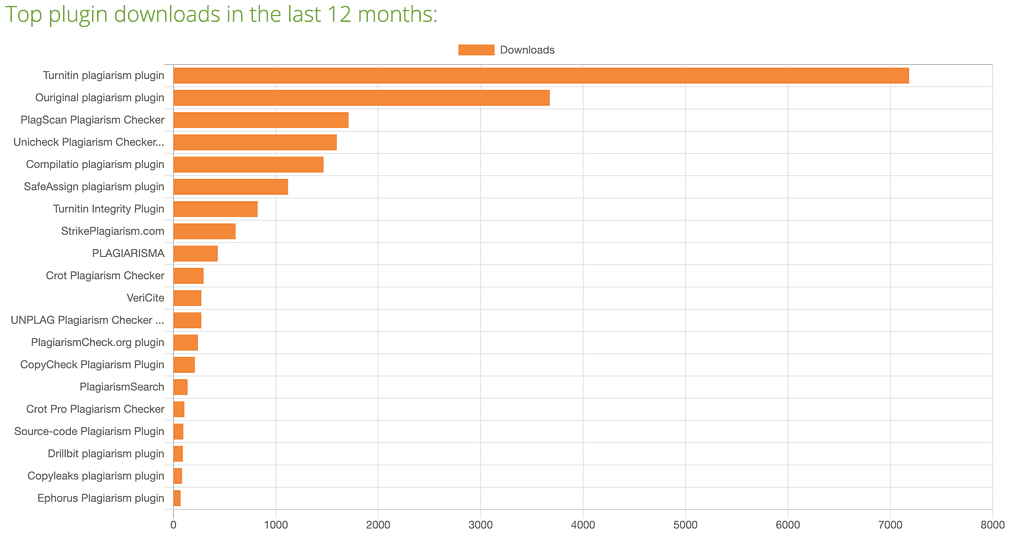In this latest blog post we look at how to spot plagiarism in student essays. Ever since the Internet began, the biggest headache for educators has been dealing with plagiarism. Thankfully, there are plenty of tools available today that help you spot when plagiarism has taken place.
Many of these tools are powered by sophisticated AI and can be effective in weeding out the students who try to present someone else’s work as their own. This saves educators a lot of time and makes the academic process more transparent and trustworthy. The other benefit is that it encourages students to be more independent thinkers, as it removes the temptation to cut and paste!
Moodle offers several plagiarism-spotting plug-ins to help users quickly deal with this issue. Specifically, they support the following activities:
- Assignment: the process whereby students submit their assignments to the tutor
- Forum: discussion forums can be scanned for plagiarism, especially when grading contributions for assessment purposes
- Workshop: highlights plagiaristic activity when students engage in peer-to-peer assessment projects
Plagiarism detection software scans a document, then looks for common patterns of text that are available online. This includes articles in different formats and those hidden behind paywalls.
In some cases, the student will have correctly cited the text they have copied and used for illustration. The clever algorithm is able to detect when this has happened. However, if the text has been used to make it look as if it’s the student’s own words, the algorithm will flag it.
One obvious workaround for scrupulous students is to paraphrase the text they wish to plagiarise. Plagiarism detection software is very effective at spotting similar patterns of text but is not fool-proof. However, it can highlight areas of concern, so that the tutor can make a call as to whether the student has misused the materials or not.
Two of the most popular tools that can be integrated into Moodle are:
A staple of academic institutions the world over, Turnitin is one of the most widely used plagiarism detectors out there. In addition to its sophisticated detection technology, Turnitin also helps tutors streamline their student assessments by adding tools that ‘foster writing intelligence and academic integrity’.
This award-winning software is also well established in the world of plagiarism detection and has recently been acquired by Turnitin. The tool can spot plagiarism in any language and is highly secure.

While both tools are similar in nature, there are a few minor differences. For example, Ouriginal is more geared towards students working on research documents. Turnitin retains all documents that have been scanned in its system in perpetuity, so that any student wishing to use another students work from previous years will be detected. Ouriginal allows for scanned documents to be deleted once they have been through the process.
It is very difficult for educators to uphold fairness and student accountability without using anti-plagiarism plug-ins. That’s why such technology is a necessity in a world where so much information is freely and easily accessible.
If you would like advice on using plagiarism detection tools or how to spot plagiarism in student essays, contact Pukunui to discuss the options.

